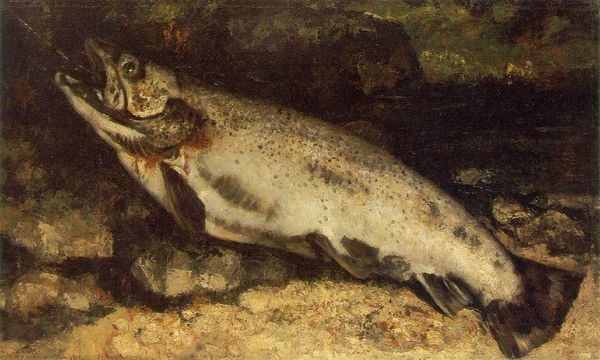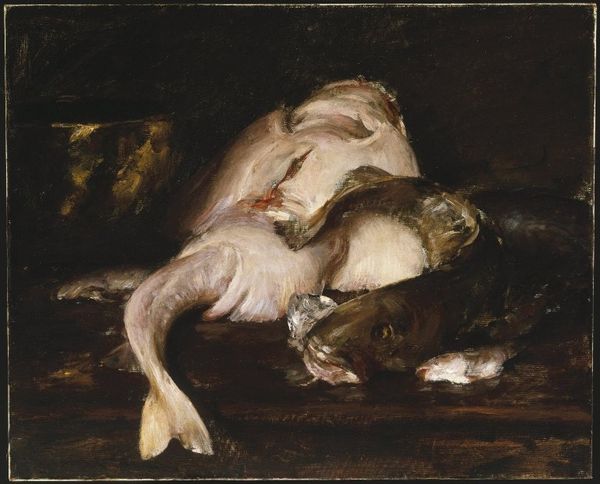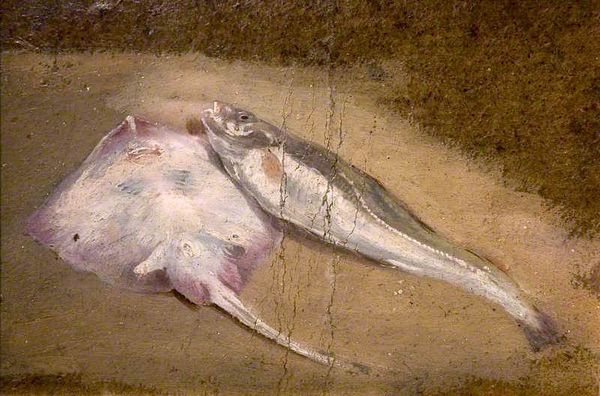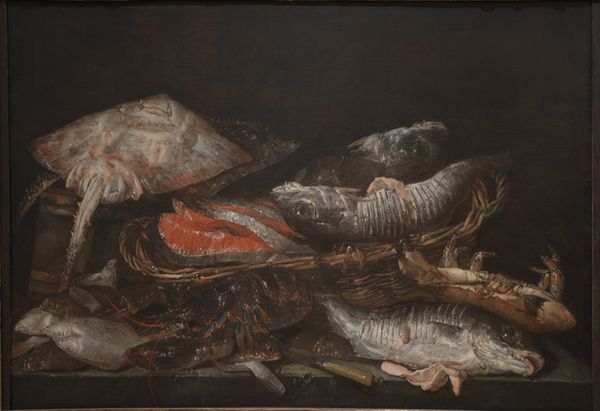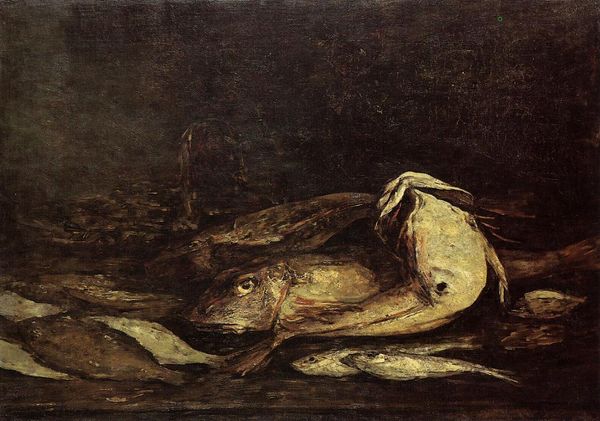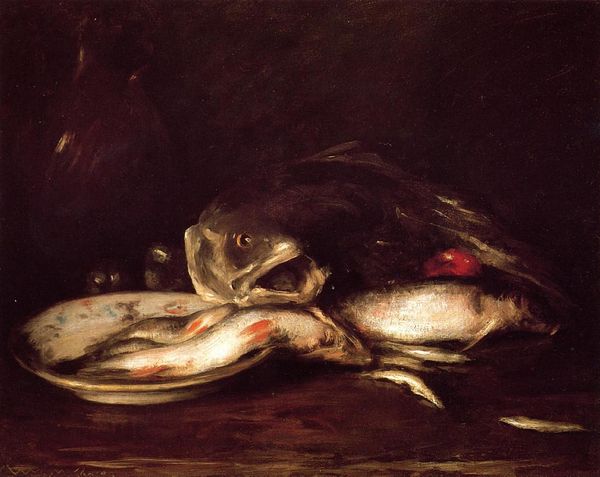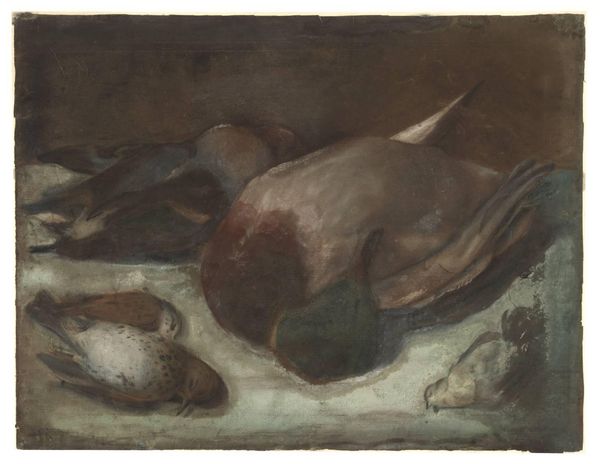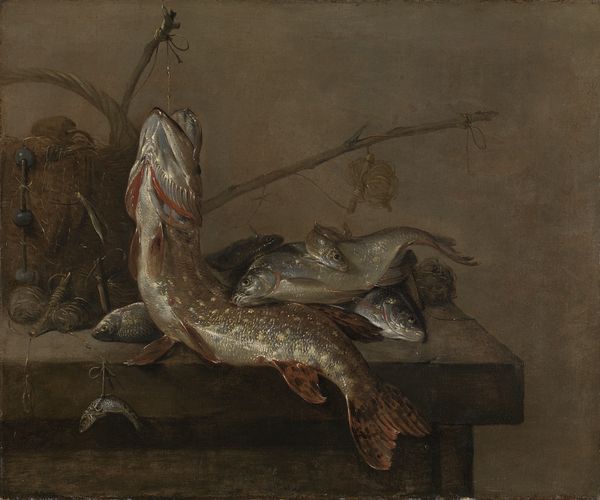
Dimensions: 65.5 x 98.5 cm
Copyright: Public domain
Editor: Here we have "The Trout," painted in 1873 by Gustave Courbet, using oil on canvas. It's... intense. The dark background really makes the dead fish stand out. What do you see in this piece, beyond the obvious? Curator: Well, beyond the stark realism, consider the historical backdrop. Courbet painted this while imprisoned for his role in the Paris Commune. Isn’t it striking that he chooses to depict a lifeless fish? Could it be a metaphor for the defeated Commune, for lost liberty, for his own powerlessness? Editor: Oh, I hadn't thought about it that way. I was just focused on the…deadness. But your interpretation casts a different light. The fish's open mouth - is that a final gasp or a silent scream against injustice? Curator: Exactly! And the Romanticism tag further enriches our understanding. The inherent drama of nature can't be avoided here, especially nature manipulated by humanity and larger social forces. Courbet painted from observation, yet his choices – the subject, the dramatic lighting – these are powerful statements. He's not just painting a fish; he's painting a condition, a critique. What feelings does this interpretation provoke in you? Editor: It makes me uncomfortable, in a good way. It's no longer just a still life; it's a political statement disguised as…lunch. I now see layers of meaning I initially missed. Curator: Indeed. Art often functions as a silent protest, reflecting on the artist's personal trauma, a people's history, or political failure. And as viewers, we engage in actively interpreting these narratives, relating them to contemporary discourse around power, freedom and our place in society. Editor: I will never look at a fish painting the same way again. Thanks for opening my eyes.
Comments
No comments
Be the first to comment and join the conversation on the ultimate creative platform.
